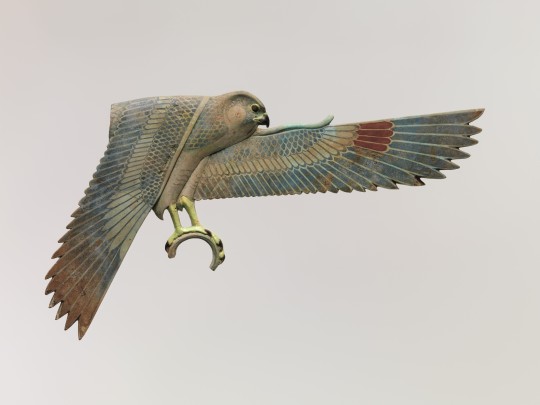Artemis, She/her |archaeologist turned museum person| I'm allowed to touch the old stuff, and I only ever dug up dinosaurs that one time and never again. Beware, history and fandoms ahead. Feel free to drop me an ask!
Don't wanna be here? Send us removal request.
Text










Pokemon Gods by devinellekurtz on Instagram
4K notes
·
View notes
Text

"Breach of Dawn"
First full painting of the new year, after a very long week. 💔
Prints of Lugia and Ho-oh available in my store. ✨️💛✨️
34K notes
·
View notes
Text
“Sound historical practice depends upon meticulous research of a wide array of sources, open-minded embrace of complexity and ambiguity, and a willingness to update understandings as new information arises. Time and again, Americans have said that they want our country’s full story. Censoring and manipulating content to fit a predetermined, triumphalist narrative is the antithesis of historical practice and a disservice to us all. “
23 notes
·
View notes
Text
university of chicago just announced a "pause" (termination) of all graduate humanities programs that require a foreign language except chinese
2K notes
·
View notes
Note
What's a difference between historians people who just like to study history?
idk maybe the fulltime yearslong professional training by other professionals and constant peer review aka quality control? what's the difference between a five star chef and someone who makes homemade meals every day.
3K notes
·
View notes
Text

Ancient Egyptian faience inlay depicting a falcon with spread wings. Artist unknown; 4th cent. BCE (Late Period or early Ptolemaic). Now in the Metropolitan Museum of Art.
1K notes
·
View notes
Text




~ Wooden figure of the Anubis-jackal, with long tail.
Cultures/Period: Late Period
Place of origin: Egypt
Medium: Wood
3K notes
·
View notes
Text

Broad collar of Senobtisi, 1850BC-1775BC, Egypt.
363 notes
·
View notes
Note
Hello! Here from the (not) trans mummy post. You mentioned you have the conviction that trans people existed throughout history. Do you know of any trans mummies? Do you know of any other trans people from ancient times? If there's lots do you have favorites?
Ahh, I would have thought the post itself made it very clear that we don't have any (known) trans mummies. I would have mentioned one if there was as that would have given people an example of what someone from the ancient world who is trans might look like. But because gender and sex are so different between then and now, it's like looking for a needle in a haystack when the haystack is shifting shape as you learn what it is, and you've no idea what a needle looks like.
You have to clearly establish the set of gender norms, gender presentation, language used, and attitudes towards gender and then you have to define what constitutes crossing over from one gender to another. Where is that line? How did the people from this time define that line? Was there a line at all? Unless you have all that defined, then you can't definitively say 'this person was trans.' To be fair, unless it's recorded with a date in a very specific place, or written down by someone at the time, there's very little in history you can say for definite. Plus there's the danger, particularly with Ancient Egypt, that people will see 'this defined a woman in the Old Kingdom' and try to apply it to the Roman period when attitudes to gender and gender presentation are entirely different. You'd have to look at Roman Egypt definitions and those can be a confusing blend between Roman, Egyptian, and even leftover Ptolemaic attitudes to sift through to pin that down.
Then you have the issue of incidence. Statistics say about 1% of the population of the world is trans, but more likely it's 2-2.5%. The population of Roman Egypt was about 7 million people (which is about as large as the population ever got, for most if it's history we're dealing with about 3-5 million people), which means if we're looking for 2% of people, there's only going to be about 140,000 individuals (60-100k in earlier periods) who might be trans/nb and then hoping that they were mummified in a way that preserved their chosen identity (not everyone was mummified, and you have to remember that the dead aren't mummifying themselves. Families may not have respected these identities and chosen to bury them as their birth gender) and then hoping that the individual's remains lasted 2000 years intact with enough context so that we can examine them and say 'ah ha!'. That's why I say it's like a needle in a haystack - there are likely very few examples and we don't have all the information to pinpoint them exactly.
As for others? Gender studies isn't my area. Neither is Roman Egypt to be honest. I'm someone who deals with the late New Kingdom, and even then it's mainly linguistics. I can't give you other examples from the ancient world because I don't know them. I know there are people who do Greek and Roman archaeology who might be able to add examples to this post, but for Ancient Egypt I don't believe we have any examples of known trans individuals (I'm open to being corrected as I know there's at least one person who follows me who'd know more).
221 notes
·
View notes
Text

Jinu x Rumi fanart 🍜
Fanart by mkun_art
15K notes
·
View notes







